Ariana Stewart reviews four Matariki pukapuka (see her reviews also in te reo Māori) and Linda Jane Keegan reviews two more.
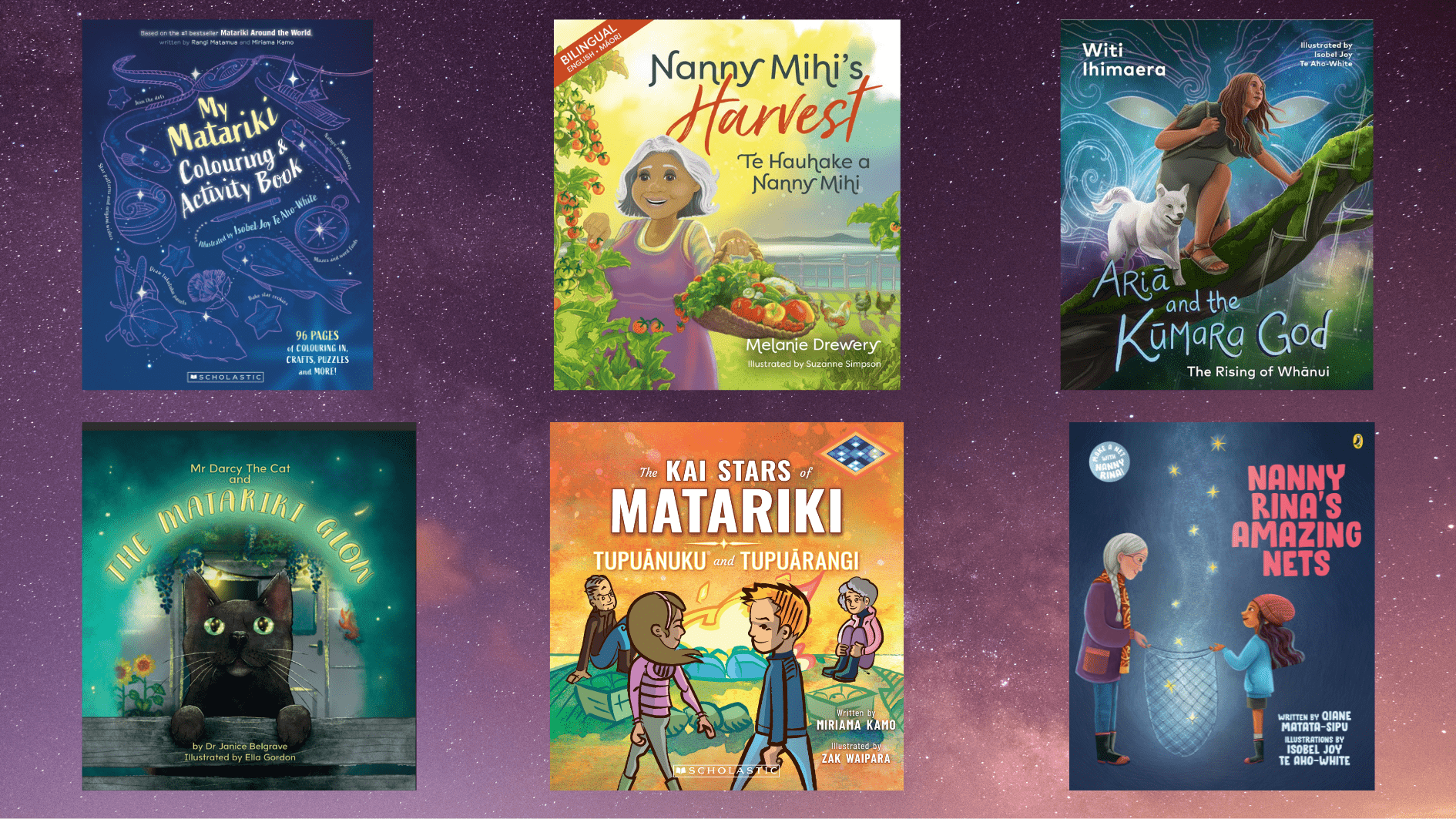
Ko Ngā Whetū Kai o Matariki: Tupuānuku rāua Ko Tupuārangi (The Kai Stars of Matariki: Tupuānuku and Tupuārangi), written by Miriama Kamo and illustrated by Zak Waipara
In the magical, wild place of Te Hāpaku, Sam and Te Rerehua love going on adventures with Grandma and Poua. This time, they’re eeling for the Matariki feast to give thanks to the food stars Tupuānuku and Tupuārangi. After months of preparation, learning, and catching eels, disaster strikes the night before the feast—sneaky Patupaiarehe gobble up all their dried eels! How will Sam and Te Rerehua save the Matariki feast?
This book effortlessly weaves the excitement of Matariki into a fun and nostalgic story.
The childlike wonder of being in nature and the witty questions from the characters
bring back memories of my own childhood. I felt more immersed into the story because
of its relatability.
“Ka whakarite tātou mō te anamata, ka whakamānawatia hoki ngā hua kua tau mai,” tā Grandma.
“Pērā i te tiakarete me te keke?” tā Sam pātai.
The inclusion of Patupaiarehe adds a mischievous twist, bringing in more Māori mythology. It was refreshing to read a story where the ‘villains’ aren’t portrayed as evil or needing to be defeated, but rather as mischievous beings who are made to correct their wrongs. I think this approach will have a positive impact on children.
I particularly enjoyed how the book explains the meanings of the stars, Tupuānuku and
Tupuārangi. Often, we learn names without understanding their significance or deeper meaning, so this was a beautiful touch.
“Kei te hāngai te nuku ki a Papatuānuku,” says Grandma.
There is a macron inconsistency where Grandma is written as Grandmā, but it doesn’t detract from the story.
The glossary at the back is a useful tool for those learning te reo Māori, helping to build vocabulary and understanding.
I truly think this is a wonderful tale that makes learning new words, meanings, and aspects of Māori mythology fun and relatable. With its beautiful illustrations and engaging story, it’s a book that both children and adults will love.
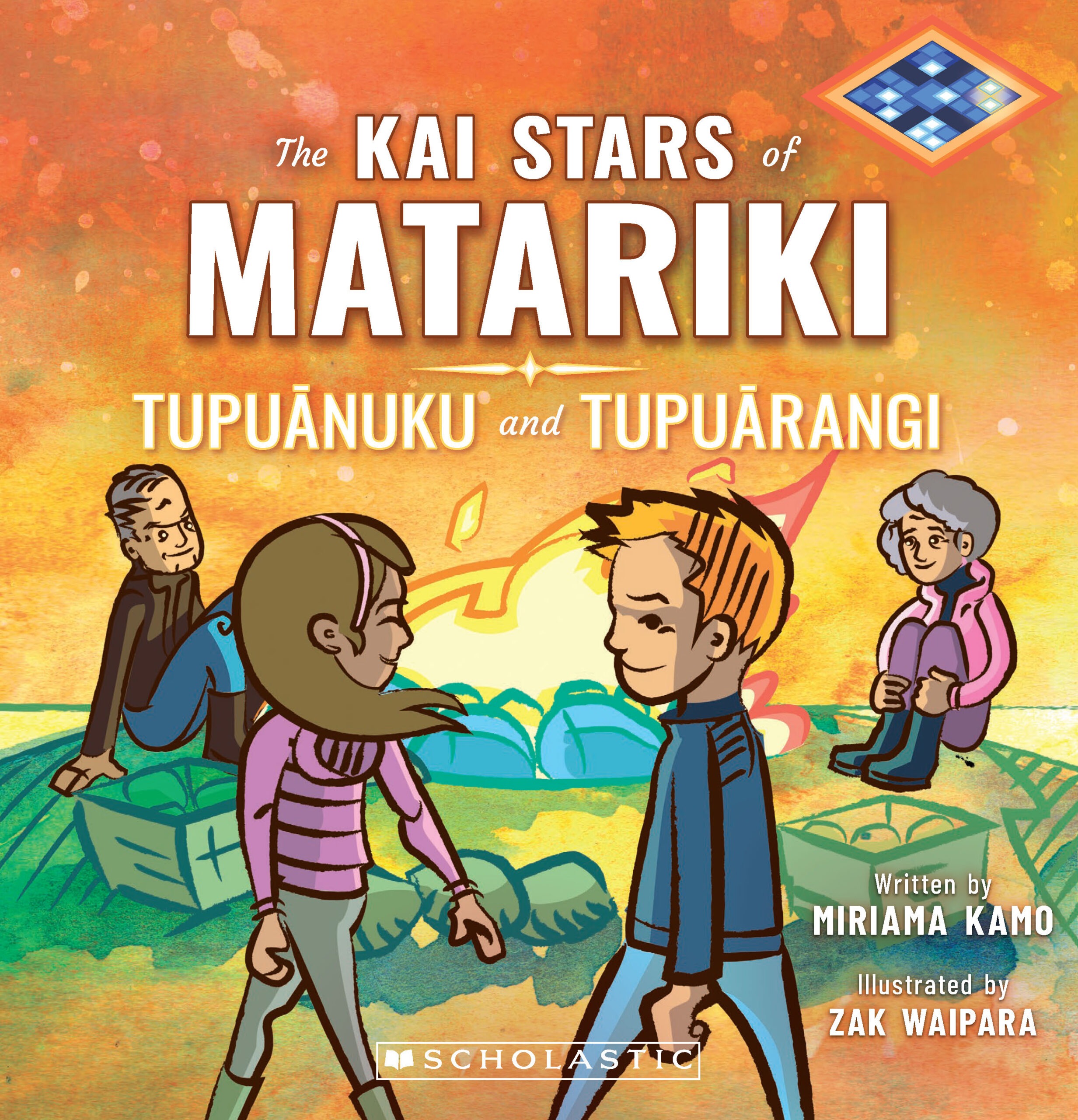
The Kai Stars of Matariki: Tupuānuku and Tupuārangi
Nā Miriama Kamo rāua ko Zak Waipara
Nā Ariana Stevens ngā kōrerō i whakamāori
Scholastic NZ
RRP: $21.99
Ngā Kupenga a Nanny Rina (Nanny Rina’s Amazing Nets), written by Qiane Matata-Sipu and illustrated by Isobel Joy Te Aho-White
This wonderful book intertwines the meanings of the stars and the traditional knowledge of weaving into a heartfelt story about love and family. Haeata Te Kapua and Nanny Rina prepare for Hautapu and take us along with them. Haeata Te Kapua asks Nanny Rina which net she will weave for Matariki, and this sparks a journey of learning about the stars, Hautapu, and different nets.
The first page features all nine Matariki stars and explains their roles. This will be great for those still learning about Matariki. I enjoyed the various words describing the stars’ shine; “taukapokapo” was new to me and is something I will add to my vocabulary.
My favourite part of the book was when Nanny Rina explained her favourite type of net. This moment delves deeper into Māori knowledge and the importance of loved ones during Matariki.
“Ko te kupenga a Taramainuku tāku kupenga whakapuhi.”
“Ka tūhono tērā ki te whetū Pōhutukawa.”
“E hono ana a Pōhutukawa ki ngā mate.”
A key theme in this book is how the nets connect to Matariki, illustrating the interconnectedness of te ao Māori. I’ve always loved learning about aspects of te āo māori, like pūrākau Māori and discovering its many connections. This holistic approach beautifully demonstrates that. It shows how every element, from the stars to the land and its people, is woven together.
At the end of the book, there’s a step-by-step guide on making a small kupenga, complete with illustrations that simplify the process. I used these techniques to make a larger kupenga so you’re not restricted to just one size.
Ngā Kupenga a Nanny Rina is an enriching book packed with mātauranga Māori. Its thoughtful storytelling and detailed illustrations make it a joy to read and learn from.
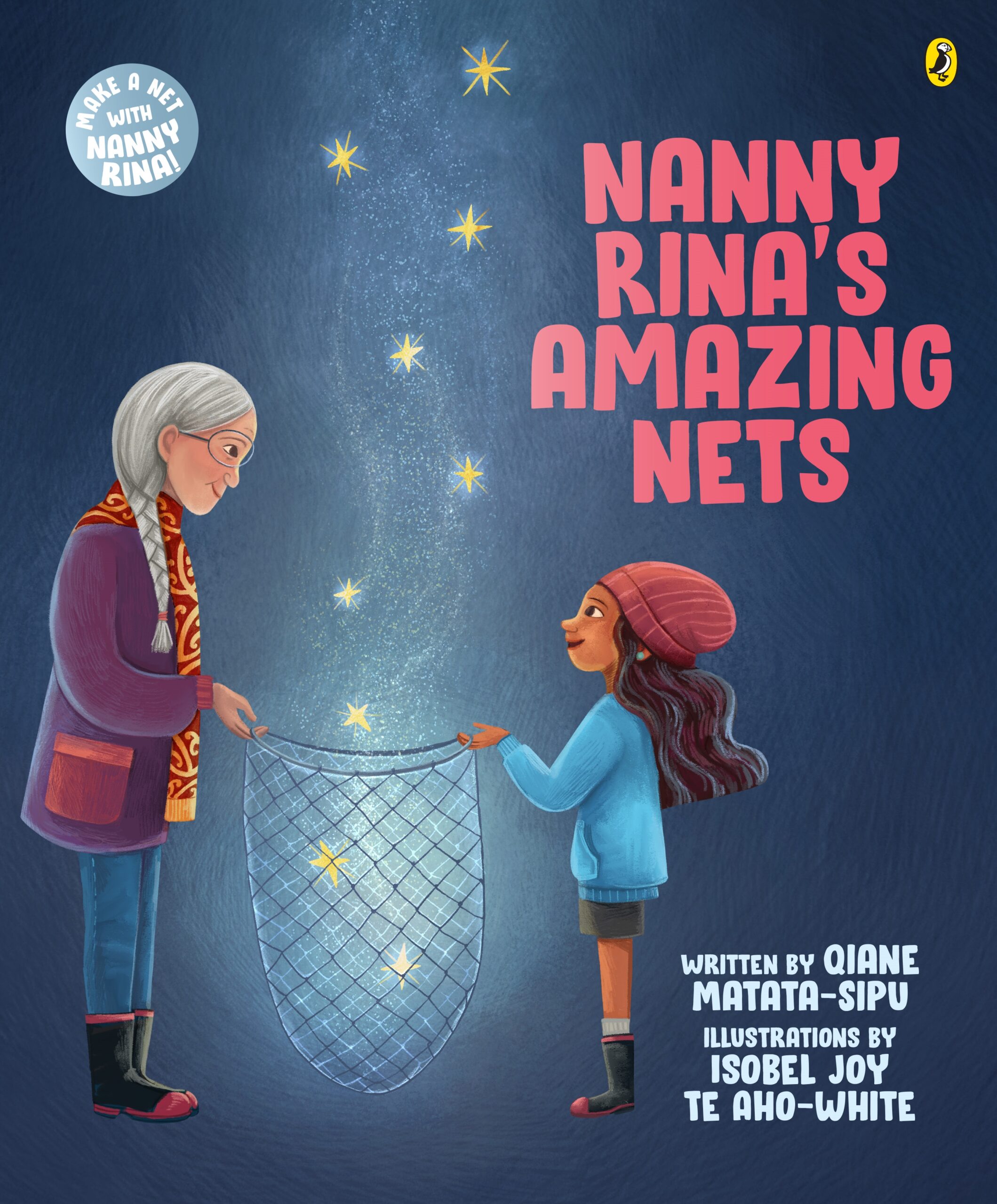
Nanny Rina’s Amazing Nets
Nā Qiane Matata-Sipu
Nā Isobel Joy Te Aho-White ngā pikitia
Penguin Random House NZ
RRP: $21.00
A Ariā me te Atua o te Kūmara (Ariā and the Kūmara God), written by Witi Ihimaera and illustrated by Isobel Te Aho-White
“Kia kaha, Ariā, kōrua ko te hinengaro auaha. Mai rā anō, ko koe taku kura huna.”
Ariā and the Kūmara God is the sequel to The Astromancer. This story picks up with the Astromancer in captivity, and we follow the fearless Aria and her friends as they journey to the heavens to save the kūmara crops. With the pressure of Matariki looming, they must take the lead and hurry to reach Whānui. They’ll need to use everything they learned from the Astromancer, but will it be enough?
I’ve always believed that mātauranga Māori and aspects of Māori culture are deeply interconnected—you can’t just pick out one part without understanding the whole. This book really nails that idea. It weaves in different pūrakau māori and aspects like atua, places and karakia, but rather than completely retelling these pūrākau, it uses them to enhance the main storyline, so we get multiple pūrakau and an engaging read.
There is a consistency in the motifs used, and with each use, you can feel the characters’ development and the significance of these.
I enjoyed the choice of keeping some illustrations in black and white and others in full colour. The black-and-white illustrations made certain moments feel dire and helped capture the essence of the story. In contrast, the colour illustrations completely immersed me in the book. It was a real wow factor to open a page to a vibrant, magical world and feel totally entranced.
The immersive, vibrant world Witi Ihimaera has created is sure to be a perfect addition to any home or for anyone who wants an engaging story with mātauranga Māori woven throughout it.
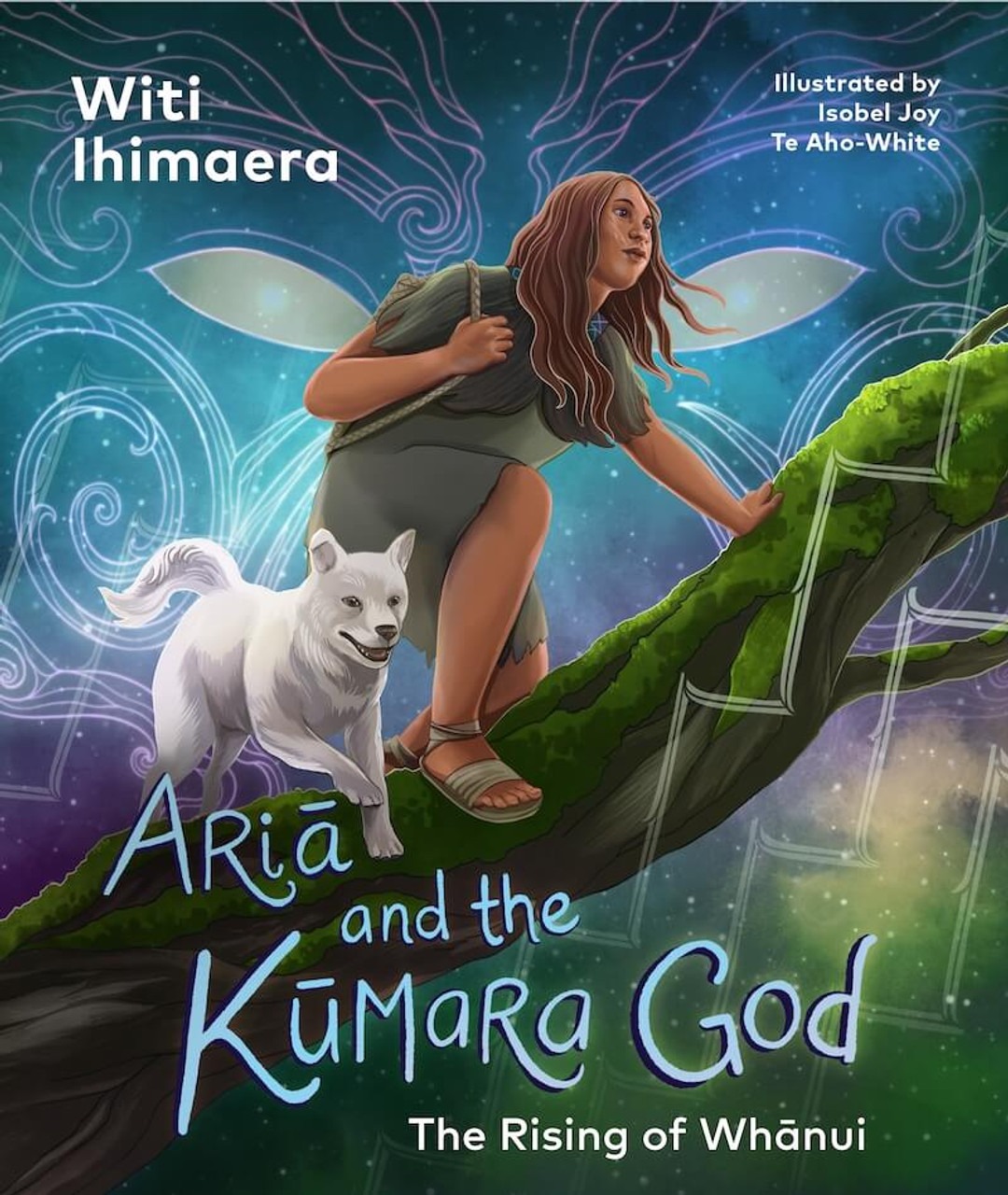
A Ariā me te Atua o te Kūmara
Nā Witi Ihimaera
Nā Isobel Joy Te Aho-White ngā whakaahua
Nā Hēni Jacob te whakamāoritanga
RRP: $25.00
My Matariki Colouring & Activity Book (based on Matariki Around the World), illustrated by Isobel Joy Te Aho-White (Scholastic NZ)
Discover the beauty of Matariki through My Matariki Colouring and Activity Book. This book promises hours or even days of fun-filled adventures and enticing activities for anyone wanting to learn more about Matariki in a visual and hands-on way.
This book is packed with activities, including colouring pages, puzzles, recipes, scavenger hunts, and many more crafts. It explores various ways to celebrate the Māori New Year and learn about Matariki. Whether it’s learning how to make ‘Hiwa’s Paper Lantern’ or venturing into the Ngāhere to identify different plants, each activity is thoughtfully designed and clearly explained, making it suitable for a wide age range.
I love how there are pages dedicated to different Māori Atua (gods) and stars, with explanatory blurbs about who they are. The activities that follow often connect to these Atua and stars, providing context and deeper understanding. I found it helpful, and it enriched my learning experience.
Sometimes I find it hard to stay engaged, but, as a visual and practical learner, I did not have that problem with this book. In fact, I found myself going back to it quite regularly. It not only teaches about Matariki but also helps develop cultural awareness and creativity.
As someone passionate about Māori culture, I found this activity book to be a wonderful way to prepare for and celebrate Matariki with my family. Together, my family and I made some kites, this activity sparked some great conversations and created some memorable moments.
Overall, My Matariki Colouring and Activity Book is a fantastic resource for everyone. It combines fun activities with educational content, making it a perfect way to learn about Matariki. The book’s creative activities and meaningful cultural insights make it a valuable addition to any home or classroom.
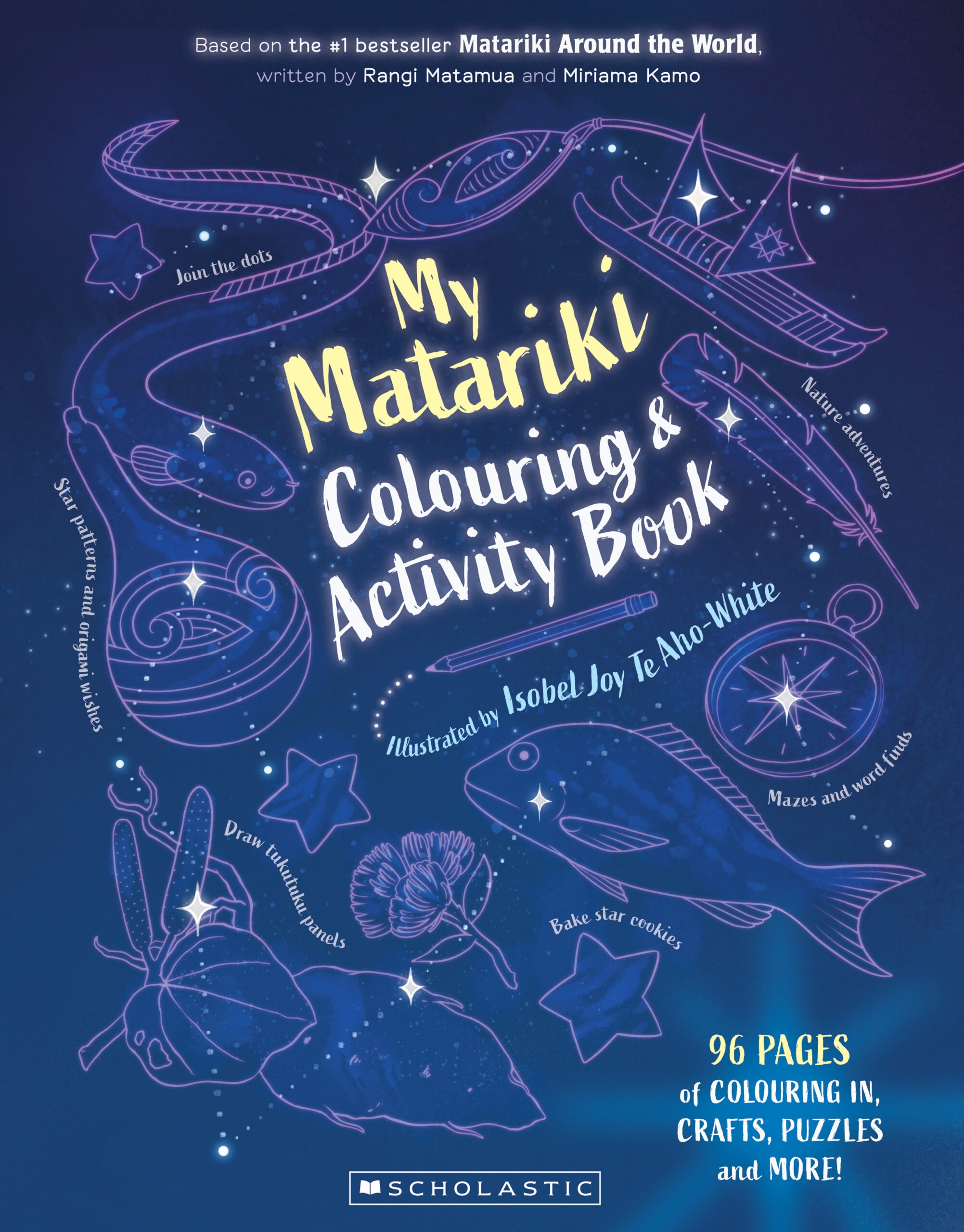
My Matariki Colouring Book
Nā Isobel Joy Te Aho-White ngā pikitia
Scholastic NZ
RRP: $17.99
Nanny Mihi’s Harvest | Te Hauhake a Nanny Mihi, by Melanie Drewery & Suzanne Simpson, translation by Kanapu Rangitauira (Oratia)
Fans of Nanny Mihi will love this addition to the series, joining Nanny Mihi and the Bellbird, Nanny Mihi and the Rainbow, and Nanny Mihi’s Medicine | Ngā Rongoā a Nanny Mihi. The text is bilingual English and Māori, with the text either on facing pages or the te reo appearing below the English. Although not explicitly about Matariki, it is a useful accompaniment to the celebration as it goes through the year planting, growing, and harvesting kai.
Nanny’s mokopuna come to visit during different seasons and help with planting, watering, picking, preserving, seed collecting, and of course eating. Kupu Māori are weaved seamlessly into the text, with some of the less common words defined at the bottom of the page they appear on. For the most part, the design of the pages has allowed space for the text without feeling too busy or overcrowded, which can happen when fitting multiple languages into the same book.
Parts of the illustration style isn’t to my personal tastes—some of the intentionally blurred or soft textures appeared digitally rendered in a way that, to me, didn’t match the rest of the artwork—but the colour and composition of the pages is bright and dynamic.
Overall it’s a pleasant wander through the seasons of a garden, including when it needs to rest.
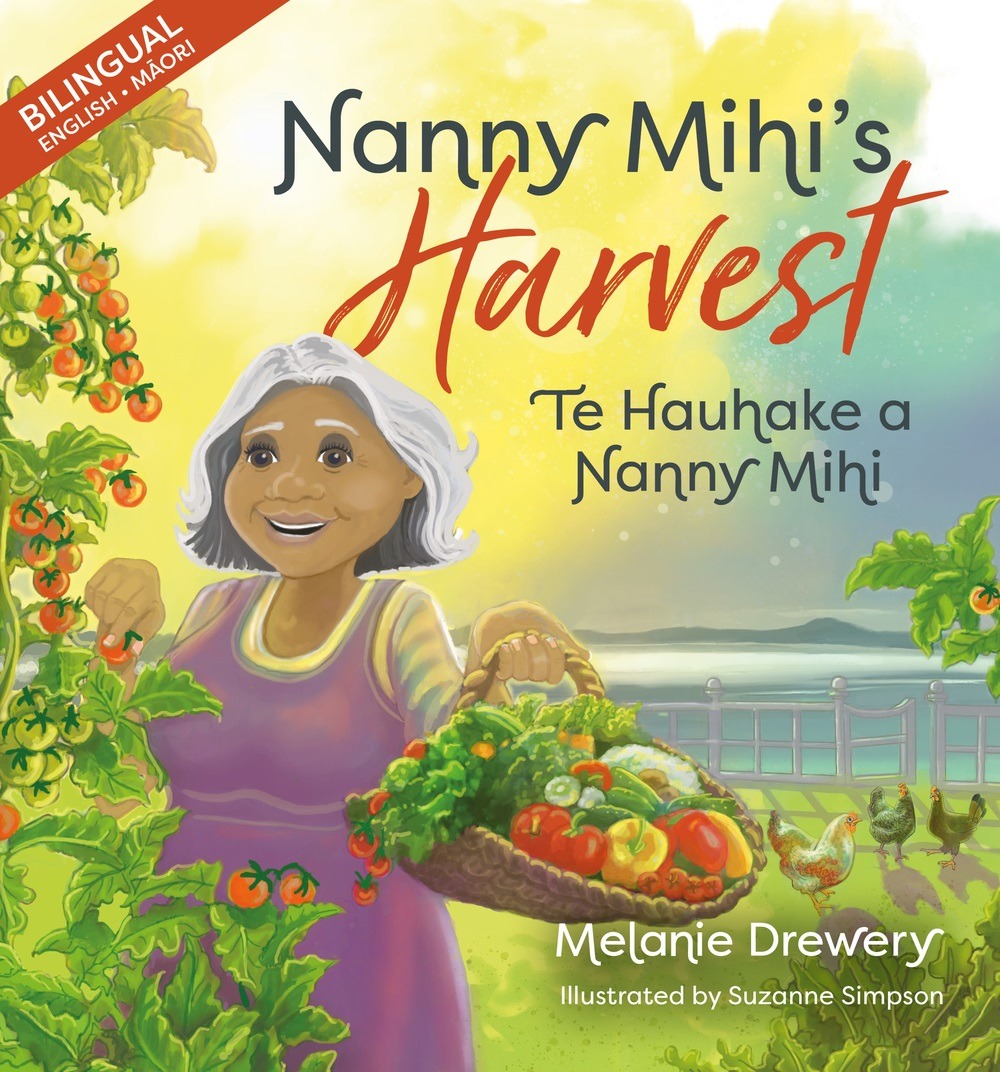
Nanny Mihi’s Harvest | Te Hauhake a Nanny Mihi
By Melanie Drewery
Illustrated by Suzanne Simpson
Translated by Kanapu Rangitauira
Oratia
RRP: $21.00
Mr Darcy The Cat and the Matariki Glow, by Janice Belgrave & Ella Gordon (J&J Literacy)
Mr Darcy The Cat and the Matariki Glow is a journey in the dreams of the titular cat, visiting different places in the world where the Matariki star cluster can be seen. The cover illustration is lovely, and appealing with the black cat placed front and centre. It’s a shame that the top and bottom title and byline text is so close to the edge on the physical book; I suspect that’s a result of the cover design not accounting for the loss of edges when printing for hardback. The endpapers, however, are pleasingly presented as a wallpaper of different cats we see throughout the book.
The illustrations are the strongest feature of this pukapuka. The colour palette and depiction of different regions in the world are delivered in wonderful textures and tones. Unfortunately, I didn’t feel the writing stood up—the rhyming text doesn’t scan and in many places feels like words were chosen to rhyme rather than contribute to the narrative. The author has chosen to include optional te reo Māori words within the lines, which is absolutely a wonderful idea, but when the Māori kupu don’t take up the same syllabic space of the words they replace, it doesn’t really work. It was also hard to ignore a missing apostrophe in ‘a Pharoahs table.’
I enjoyed seeing Egypt, Greece, China and Japan featured, and names used in those places to describe the Matariki cluster, although I think it would have been useful to mention that the cluster is visible at different times in different hemispheres. I appreciated that the name Matariki itself was used as the default, however, I felt using Captain Cook ashore at Smugglers Cove to illustrate English-speaking countries’ term the ‘Seven Sisters’, was incredibly tactless and out of touch for a book choosing to centre on a Māori celebration.
A glossary in the back covers more sophisticated English vocabulary (plus one Japanese word), and a repeat of the Māori kupu used in the text. There is also a page explaining Matariki, and QR codes for more information and teaching resources at the NZ Government Education and J&J Literacy (the book’s publisher) websites. I was surprised to see no acknowledgement of Matariki being observed as seven or nine stars, but it is otherwise a succinct and clear description of the significance of the holiday.
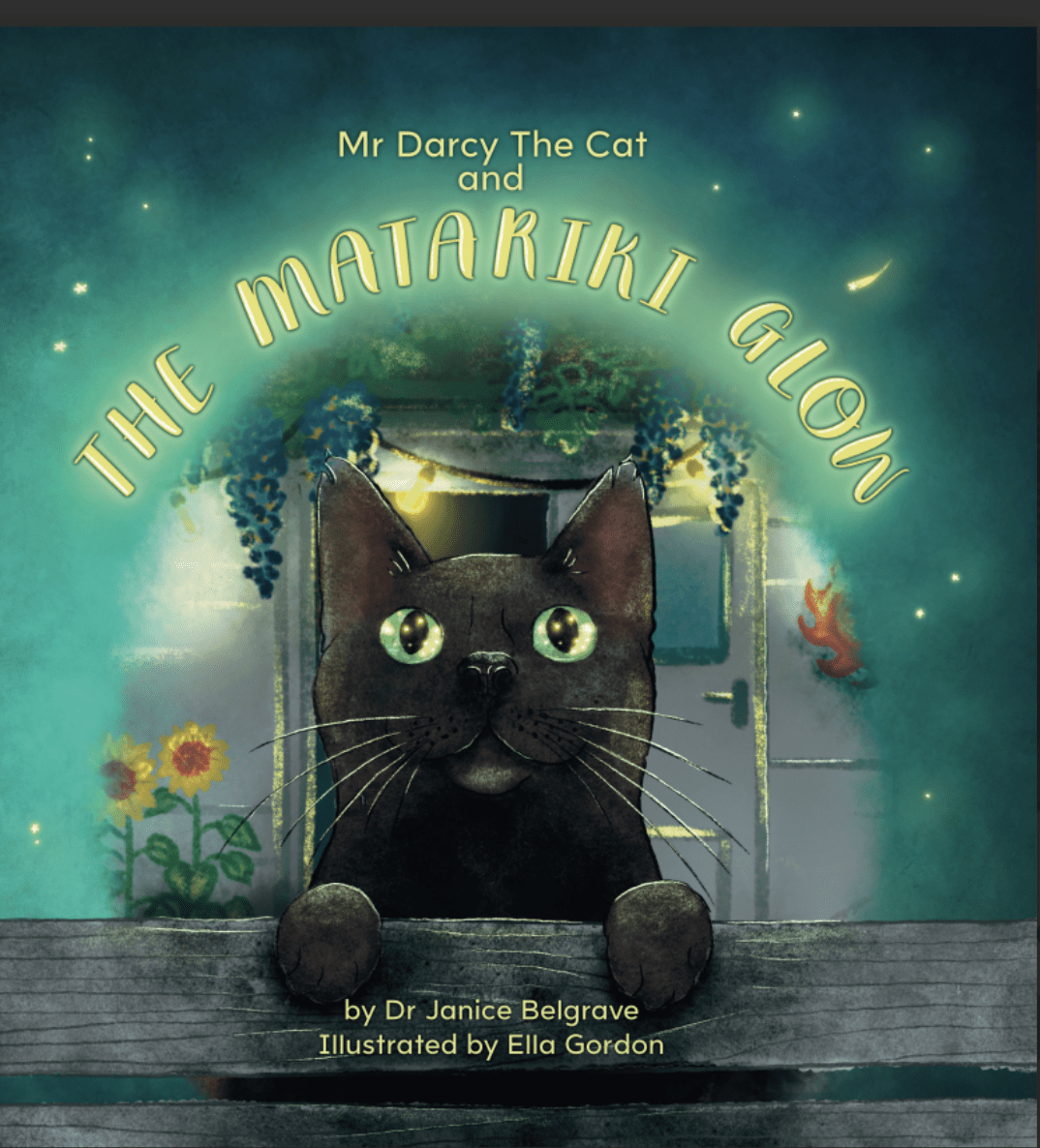
My Darcy The Cat and the Matariki Glow
By Janice Belgrave
Illustrated by Ella Gordon
J&J Literacy
RRP: $21.75





